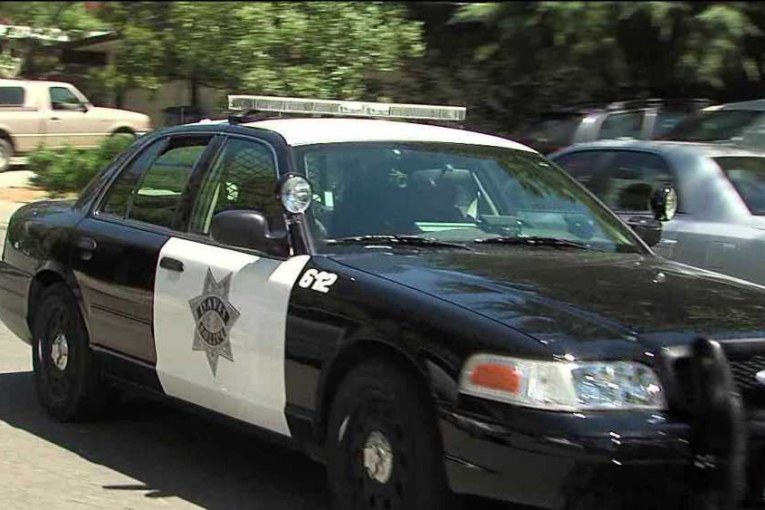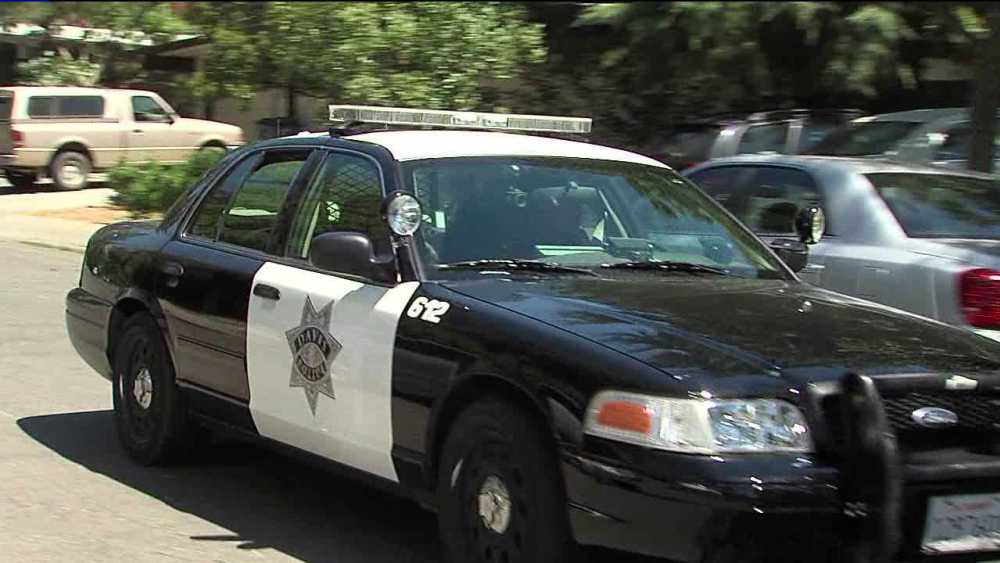

By David M. Greenwald
With the call to defund the police, the Davis City Council last June appointed a subcommittee “to develop a proposed outreach plan/work plan related to identifying and funding community health and safety improvements.”
The subcommittee was comprised of members from the Police Accountability, Human Relations and Social Services Commissions, as well as the Independent Police Auditor, and Yolo County.
The subcommittee has issued a full report with nine recommendations.
The joint subcommittee recommendations are summarized below:
1. Determine why racial disparities in arrests, recommended charges, and stops exist in Davis.
2. Encourage the Davis Police Department to dialogue with the Police Accountability Commission (PAC) on the content of its Use of Force policy.
3. Evaluate the impact of de-escalation, crisis intervention, procedural justice, and implicit bias trainings.
4. Shift non-violent service calls to unarmed personnel.
5. Reinvent the police-community conversation.
6. De-prioritize, decriminalize, and offer restorative remedies for minor, victimless offenses through warm hand-off programs, an expansion of the specialty court system, and other measures.
7. Work with County partners to build an integrated, “Crisis Now” -type model for behavioral health emergencies.
8. Expand the City’s community navigator workforce.
9. Commit to a vision of reimagined public safety.
The following is the synopsis of each recommendation:
Recommendation 1: Determine why racial dis-parities in arrests, recommended charges, and stops exist in Davis.
The percentage of Hispanic and Black arrestees in Davis over the 2015-19 period is strongly disproportionate to the population shares of these groups in the City, a finding which holds even when considering arrests of Davis residents only. Black people are arrested at a rate 5.9 times more, and Hispanic people times more, than their population share; when considering only Davis residents, Black people are arrested at 0 times and Hispanic people 1.4 times their population share. Both sets of figures far exceed the racial disparity in arrests in the United States as a whole. Similar racial inequalities hold with respect to the overall number of recommended charges filed by Davis Police Department (DPD) officers in the city, and Hispanic and Black people are also subject to traffic-related stops and searches at a much higher rate than their respective population shares in Davis (though roughly proportional to regional population shares). We recommend a detailed study of the determinants of racially disproportionate stops, arrests, and recommended charges in Davis, including an analysis of the relative contributions of potential bias in policing, potential bias in community reporting, and socio-economic factors. This will likely require a regional analysis in partnership with agencies from Yolo County and surrounding counties.
Recommendation 2: Encourage the DPD to dialogue with the Police Accountability Commission (PAC) on the content of its Use of Force Policy.
We laud the DPD for taking proactive steps towards the “8 Can’t-Wait” reforms on use of force best practices. Conversation with the PAC may help to identify aspects of the policy that could be improved to elevate the best practice standard even further. Possible changes may include:
- Specifying de-escalation techniques in more detail;
- Specifying the timetable for crisis intervention re-certification and de-escalation, procedural justice, and implicit bias re-training;
- Prohibiting the use of physical force in the case of fleeing subjects who have not committed a serious crime and do not pose an active threat; and
- Adopting more restrictive guidelines for the use of deadly
Recommendation 3: Evaluate the impact of de-escalation, crisis intervention, procedural justice, and implicit bias trainings.
We encourage exploring opportunities to partner with University of California- Davis researchers working on community development, racial equality, and other relevant issues. The first project could be an evaluation of DPD trainings. We laud the DPD for its commitment to crisis intervention, implicit bias, and procedural justice trainings for its officers. However, recent research calls into question the long-term impact of implicit bias and crisis intervention trainings, although procedural justice trainings do have strong and consistent effects on reducing the use of force. We recommend continuing to hold all of these trainings, but using rigorously designed evaluations to determine the enabling factors that would lead to lasting impact.
Recommendation 4: Shift non-violent service calls to unarmed personnel.
We suggest that some service calls received by the DPD could be shifted to unarmed personnel outside the DPD without increasing risk to the community or to responders. The nuisance/code enforcement, minor traffic violations (to the extent permitted by State law), and property theft categories are the primary candidates for near-term diversion to unarmed responders, with mental health/welfare check calls a possible medium-term goal. Between 2015 and 2019, these four categories comprised 23.9% of service calls received by the DPD. Any such shifts would be led by considerations of both client and responder well- being.
Recommendation 5: Reinvent the police-community conversation.
We recommend the City establish an ongoing, confidential public input process centering communities of color, the homeless, and other at-risk groups. We recognize that a trove of information from past public input processes on policing exists. However, these past efforts suffered from two weaknesses. First, they did not adequately provide accessible yet confidential means for marginalized communities to share their views; we believe that a proactive outreach component is essential. Second, they were not rigorously evaluated for their impacts on police-community trust and perceptions of police legitimacy; strong evaluation will better inform the design of input processes and trust-building initiatives more broadly. We also recommend the City carry out an anonymous survey of police officers to solicit perspectives about their work, racial bias, and building stronger relationships with the community. We suggest that the City connect with two ongoing community input processes on race and policing, one by the local group Yolo People Power and the other by the University of California- Davis’s Center for Healthcare Practices. As a broader trust-building measure, we also suggest demilitarizing the appearance of officers, for example through permitting more casual clothing when appropriate.
Recommendation 6: De-prioritize, decriminalize, and offer restorative remedies for minor, victimless offenses through warm hand-off programs, an expansion of the specialty court system, and other measures.
We recommend de-prioritizing the enforcement of a broader set of minor, victim-less offenses and, working with the Yolo County District Attorney, de- criminalizing as many minor offenses as possible. We also recommend implementing warm hand-off programs along the lines of the substance use model deployed last year by the DPD, the Yolo County Health and Human Services Agency (HHSA), and local behavioral health care providers. We also recommend expanding the successful specialty court system; the interest in participation in the alternative courts exceeds the opportunities currently available.
Recommendation 7: Work with County partners to build an integrated, “Crisis Now”-type model for behavioral health emergencies.
The characteristics of Davis—a low violent crime rate, an acknowledged grow- ing behavioral health and substance use crisis, and a strong existing relationship between the DPD, Yolo County HHSA, nonprofit agencies, and other stakeholders—are ideal for implementing a diverse approach to behavioral crisis response. This entails several steps. First, bolster the menu of options for crisis response: provide resources to allow existing and planned DPD crisis intervention and co-responder teams to be available 24/7; train ambulance-based personnel in behavioral health; and support the development of unarmed mobile crisis teams. Second, pilot a crisis call hub to route calls to the appropriate crisis response team, building on Davis’s in-house 911 dispatch system. Third, work with health providers to set up a joint behavioral health receiving facility that is safe and supportive. We urge that the a Crisis Now-type approach be accompanied by a robust evaluation framework exploring the impact of interventions on client health outcomes, responder attitudes and skills, overall stakeholder satisfaction, and financial sustainability of City and County agencies.
Recommendation 8: Expand the City’s community navigator workforce.
We recommend continuing and expanding the community navigator pilot initiative in the Davis Emergency Shelter Program. The DPD’s Homeless Outreach Services program is effective and well-respected, and additional human resources would greatly help improve coverage and frequency of contact with at-risk individuals, including the homeless, those with mental illness, and those with substance use issues. Navigators help build client trust in the care team, help the client navigate available social and healthcare services, and work to keep the members of the care team—clinicians, social workers, social service agencies, etc.—well-coordinated. The community navigator force would be led by paid professionals, but paraprofessional and volunteer involvement is viable given Davis’s unique human resources.
Recommendation 9: Commit to a vision of re-imagined public safety.
Many of the recommendations in this report could be addressed by the non-sworn side of the DPD. That would be the simplest implementation path and could result in mutual learning and stronger coordination between police officers and social service workers, but does not propose bold solutions to systemic racism. Instead, we believe that the two visions enumerated below are compelling alternative visions for addressing social service needs and taking action against racial disparities:
- a “New Department” (ND) model in which social services and non-violent aspects of public safety are placed under the responsibility of a new City agency lateral to the DPD;
- a “New Structure” (NS) model in which all public safety services, including the DPD, are placed under a single umbrella
The ND model affirms the City’s commitment to taking a public health approach to issues of racism, poverty, and public safety, but may present coordination challenges with the police department. NS may be the most powerful option to facilitate the development of a Crisis Now-type model and instill new public safety values into City institutions, but is also a more challenging transformation of City structure.
The initial impression of the TJS is that the NS model is most promising. The NS model is an opportunity to build a new foundation of public safety on the values of anti-racism, transparency, and evidence-based decision making. The TJS notes, however, the importance of seeking further input from stakeholders and members of the public to inform which vision is best for Davis. Regardless of which model is chosen by the City Council, we recommend clearly articulating and committing to the vision. Finally, we recommend that all programs, current and planned, contain a strong monitoring and evaluation component, and that all public safety datasets be made available in a expeditious and transparent manner, ideally through a user-friendly online portal.
Support our work – to become a sustaining at $5 – $10- $25 per month hit the link:







Charlotte, NC implemented some of the reforms recommended by the subcommittee: https://t.co/Cxnjm99oSB?amp=1
In considering which of the two plans is best listed in Recommendation #9, one thing not mentioned is how siloed things might be in the New Department model vs. having an umbrella “New Structure” that facilitates them all working together toward mutual goals and providing training in common that supports those mutual goals. I know this will have associated cost but would hope our leaders and staff can reevaluate budgets and expenditures, find efficiencies, and shift funding around.
Much agree. This was the basic idea behind well-thought-out model put forward by council-candidate Kelsey Fortune. I much favor for this approach for the following reasons:
• Common dispatching – so there is one number to call and dispatcher can sort-out which unit responds.
• Common administration services – saves money
• Common umbrella administration – so all answer to a common leadership entity (as opposed to working against each other in separate agencies or fighting for funds).
• Puts police on a similar footing to other public safety agencies – thus funds can be ‘redistributed’ as appropriate, rather than police targeted for – ahem – defunding.
• Best way to incorporate already positive Davis Police program using non-badge police employees to do appropriate social service functions – by re-assigning in the same agency rather than moving to a new agency.